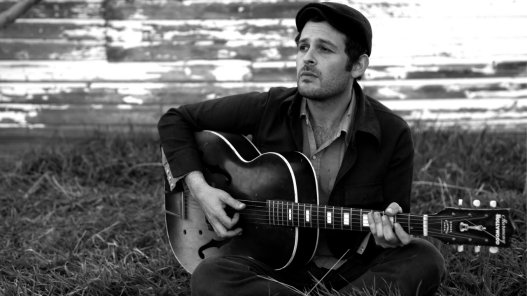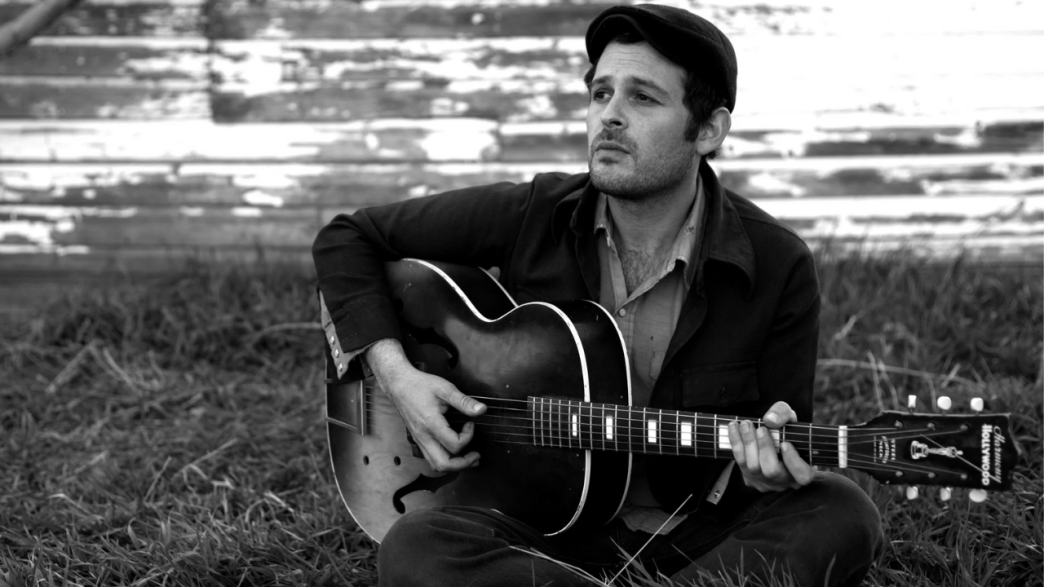Gregory Alan Isakov, known for his poetic folk arrangements and thoughtful storytelling, captures themes of personal changes and the passage of time in his song “The Stable Song.”
Released as part of his “That Sea, The Gambler” album, the song finds ideas of impermanence, memory, and finding stability amid life’s constant changes.
In “The Stable Song,” Isakov sings about the cyclical nature of existence and the search for meaning through natural imagery and introspective reflection.
The song’s haunting lyrics take us through personal contemplations of growth, seasons of change, and the quiet resilience that emerges from weathering life’s storms.
About the Song “The Stable Song”
“The Stable Song” blends Isakov’s signature folk sound with poetic lyricism and atmospheric instrumentation. It’s a track that mixes nostalgia with an acceptance of life’s impermanence.
The song’s gentle guitar picking, understated percussion, and soulful vocals all reflect the contemplative nature that runs through its lyrics.
Isakov’s warm, earthy voice adds emotional depth to the song, making it relatable to anyone who has experienced significant life transitions or who contemplates the passage of time.
| Detail | Information |
|---|---|
| Released | 2007 |
| Album | That Sea, The Gambler |
| Writers | Gregory Alan Isakov |
| Producer | Gregory Alan Isakov, Jamie Mefford |
| Genre | Folk/Americana |
| Chart Peak | Notable streaming success on folk playlists |
| Awards | Featured in numerous films and TV shows |
“The Stable Song” Lyrics
Verse 1
Remember when our songs were just like prayers
Like gospel hymns that you called in the air
Come down, come down, sweet reverence
Unto my simple house and ring
And ring
Chorus
Ring like silver, ring like gold
Ring out those ghosts on the Ohio
Ring like clear day wedding bells
Were we the belly of the beast or the sword that fell
We’ll never tell
Verse 2
Come to me, clear and cold, on some sea
Watch the world spinning waves, mad machine
Now I’ve been crazy couldn’t you tell
I threw stones at the stars, but the whole sky fell
Now I’m covered up in straw, belly up on the table
Well I drank and sang, and passed in the stable
Verse 3
That tall grass grows high and brown
Well I dragged you straight in the muddy ground
And you sent me back to where I roam
Well I cursed and I cried, but now I know
Now I know
And I ran back to that hollow again
The moon was just a sliver back then
And I ached for my heart like some tin man
When it came, oh it beat, and it boiled, and it rang
Oh it’s ringing
Chorus/Outro
Ring like crazy, ring like hell
Turn me back into that wild haired gale
Ring like silver, ring like gold
Turn these diamonds straight back into coal
Turn these diamonds straight back into coal
“The Stable Song” Lyrics with Meaning
Verse 1
Remember when our…..and ring
Meaning: In the opening verse, the singer reflects on a time when music held a sacred quality, comparing songs to prayers and gospel hymns.
He’s evoking nostalgia for when creative expression was pure and meaningful. The call for “sweet reverence” to “come down” shows a desire to recapture that sacred connection in his “simple house,” possibly reflecting his current state.
Chorus
Ring like silver…..never tell
Meaning: The chorus uses the metaphor of ringing bells to represent resonance and clarity. These bells are meant to “ring out ghosts” – perhaps painful memories or past selves. The mention of Ohio indicates a place of significance.
The question about being “the belly of the beast or the sword that fell” shows uncertainty about whether they were victims or active in their downfall. “We’ll never tell” suggests some secrets will stay unresolved.
Verse 2
Come to me clear…..like some machine
Meaning: This brief verse uses oceanic imagery to convey distance and perspective. The invitation to “come to me clear and cold” suggests a desire for honest connection without emotional cloudiness.
Comparing waves to a machine highlights the mechanical, cyclical nature of life, suggesting both predictability and relentlessness.
Verse 3
Now I’ve been crazy….. passed in the stable
Meaning: The third verse acknowledges past recklessness and hubris. “Throwing stones at the stars” represents challenging the impossible, with consequences that were overwhelming.
The imagery of being “covered up in straw” and “belly up on the table” suggests vulnerability and defeat. The stable reference (connecting to the song’s title) implies finding rest in an unexpected, humble place after exhausting oneself.
Verse 4
That tall grass.….now I know
Meaning: This verse deals with the consequences of hurting someone (“dragged you straight into the muddy ground”) and being sent away as a result.
The tall grass represents the passage of time, growing over past mistakes. The repetition of “now I know” indicates acceptance and understanding that has come through difficult experience.
Bridge
And I ran back ….. It’s ringing
Meaning: The bridge describes returning to a familiar empty place (“hollow”), perhaps literally or emotionally. The “sliver” of moon suggests minimal light or guidance. The Tin Man reference from
The Wizard of Oz illustrates the paradox of feeling heartless while yearning for a heart. When emotions return, they are intense, beating, boiling, ringing, ‘inking to the chorus with “it’s ringing’ in present tense.
Final Chorus / Outro
Ring like crazy…..back into coal
Meaning: The final chorus intensifies the ringing metaphor, now asking it to “ring like crazy, ring like hell”, expressing desperation for changes.
The paradoxical request to “turn these diamonds straight back into coal” suggests wanting to reverse what might seem like progress to return to a more authentic, unrefined state.
Live Performances
Key Themes of “The Stable Song”
“The Stable Song” examines impermanence, memory, and finding peace through change, using natural imagery to find how we adapt and grow through life’s transitions.
- Impermanence and acceptance: Isakov highlights the fleeting nature of moments and experiences, emphasizing the importance of finding peace through accepting change.
- Memory and reflection: The song meditates on how we carry past experiences with us even as we move forward into new phases of life.
- Connection to nature: Natural imagery serves as both setting and metaphor throughout the song, linking human experience to broader natural cycles.
- Finding stability within change: The paradoxical title suggests that stability might not be found in external circumstances but in one’s adaptation to change itself.
Through these themes, Isakov captures the balance between seeking groundedness and embracing adaptation, all while celebrating the adventure of living authentically.
Similar Songs to “The Stable Song”
If you enjoy the themes of reflection, transformation, and natural imagery in “The Stable Song,” here are other tracks that offer similar emotional landscapes:
- “Holocene” by Bon Iver: A meditative track about perspective and humility with similar atmospheric qualities.
- “The Trapeze Swinger” by Iron & Wine: A narrative folk song searching memory and the passing of time.
- “Rivers and Roads” by The Head and the Heart: A song about transitions and the distance that comes with life changes.
- “To Build a Home” by The Cinematic Orchestra: A piano-driven meditation on finding and creating belonging in a transient world.
View the words to “Chris Brown – Under The Influence Lyrics” here.
Frequently Asked Questions (FAQs)
What Movie Is the Stable Song From?
“The Stable Song” wasn’t originally from a movie, but it has been featured in several films and TV shows, including “The Haunting of Bly Manor” on Netflix.
Are There Notable Live Versions of “the Stable Song”?
Yes, performances with the Colorado Symphony add orchestral depth and unique emotional resonance to the song.
What Instruments Are Used in The Stable Song?
The original recording features acoustic guitar, piano, minimal percussion, cello, and vocals, while the Colorado Symphony version adds orchestral instruments, including strings and woodwinds.














